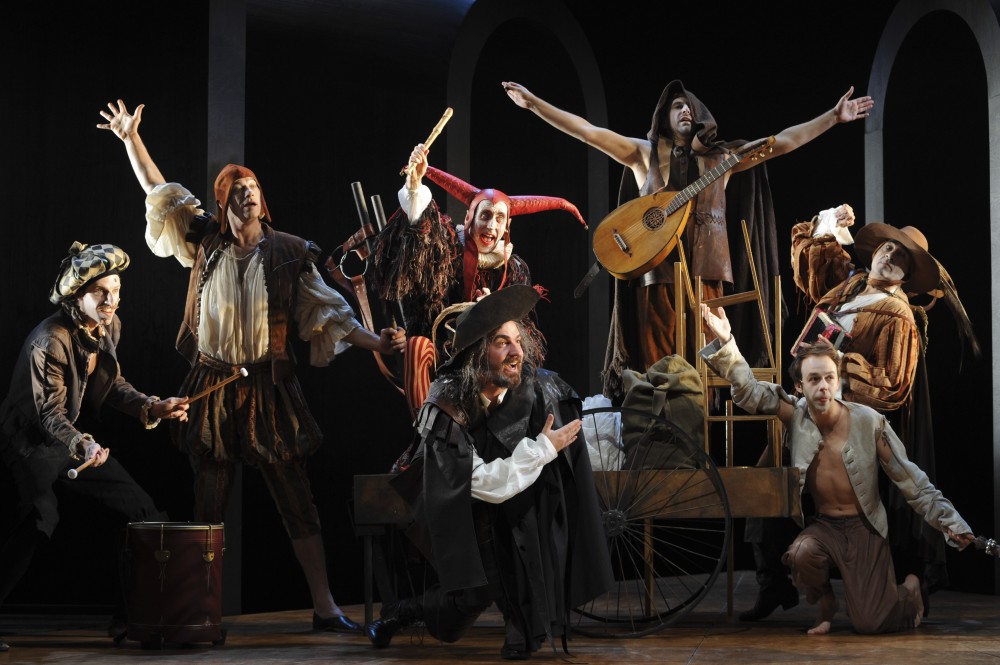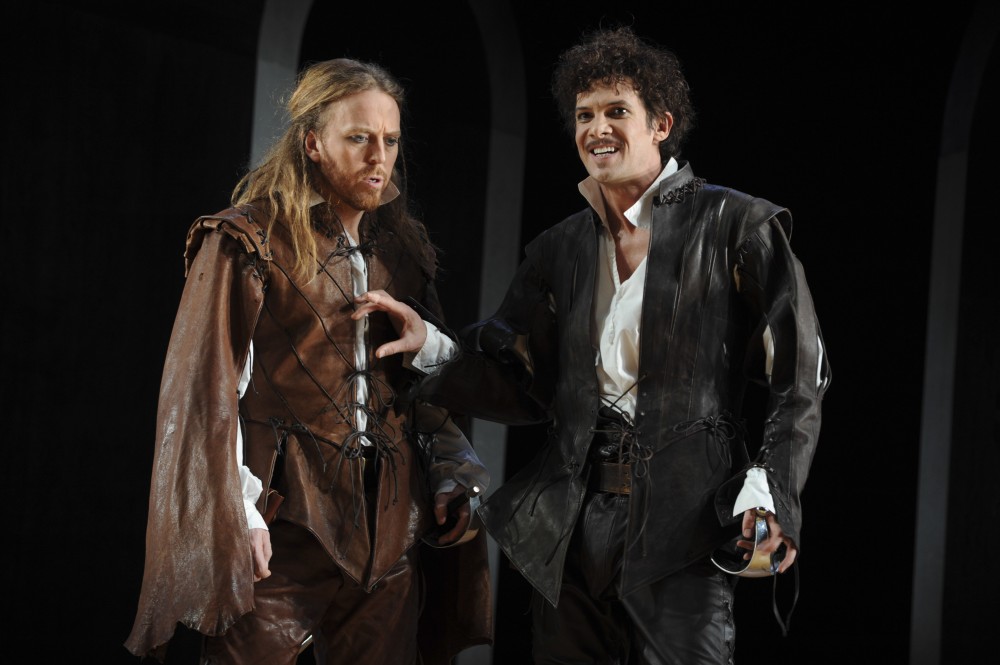Sydney Theatre, August 10

Despite its inevitability there is still a shock in seeing cracks in the art one revered in one’s youth. As a teen Rosencrantz and Guildenstern Are Dead was probably my favourite play; certainly my favourite comedy. Tom Stoppard had sprinkled Spike Milligan madness across Waiting For Godot, wrapped it in Hamlet, and then attached little philosophical gems as randomly as contemporary body-piercings. It made one laugh out loud while reading, and this was in the dour confines of Higher School Certificate English!
The first time I saw it on stage was a savage disappointment, and even Stoppard’s own film of the work seemed to lack the lightness that had been on the page. An inherent problem is pacing. It is a very long (two-and-a-half-hours) play for a comedy, and because Rosencrantz and Guildenstern spend nearly all their time waiting, wondering, puzzled and bored much of it must be played at a languorous pace, where on the page one’s eye speeds from one dazzling or outrageous witticism to the next.

Simon Phillips’ production for Sydney Theatre Company contains nothing to disappoint the rusted-on fan: those of us who can mouth many of the words and who know all the punch-lines. It feels fresh and lively, lovable and fun. The casting of Tim Minchin as Rosencrantz and Toby Schmitz as Guildenstern is more than a marketing manager’s dream. Minchin catches’ Rosencrantz’s drier, thick-brained acceptance of their predicament and of the phenomena – 92 consecutive cases of a tossed coin coming up heads, for instance – that cause Guildenstern such existential anguish as to send Schmitz’s voice up to a tortured falsetto.
Ewen Leslie’s Player storms into the middle of their baffled idleness with a ragged troupe that could have escaped from a painting by Bosch or Bruegel. Leslie is magnificent in disporting a swaggering confidence to contrast with the protagonists’ doubt and inertia. In fact the cast is packed with actors relishing their roles. Heather Mitchell’s Gertrude is an Elizabeth I double who moves and speaks like a life-size doll on barbiturates, swept about on the arm of Christopher Stollery’s imperious Claudius. Adele Querol’s Ophelia is a flower waiting to be snapped at the stem by the indifference of Tim Walter’s caricatured Hamlet.
They all waft, dash about or wait on the exaggerated perspective of Gabriela Tylesova’s striking set. With its three arched, forbidding entrances on each side of a triangular stage, it could be the setting for Guildenstern’s worst existential nightmare – and is. Her Elizabethan costumes bring blazes of colour (highlighted by Nick Schlieper’s lighting) to the midst of the protagonists’ sepia inaction.
Alan John’s music is a mix of recorded and live sound, the latter courtesy of the Players, and especially multi-instrumentalist Paul Cutlan in his crazed court-jester hat.
Simon Phillips adroitly moves Rosencrantz and Guildenstern’s procrastinations around this triangular space that has six ways out, but none that they can ever find – or even find a reason to find. He has lovingly brought the text to life, and he and his cast miss none of its laughs. The problem is that there are slabs, such as the “playing at questions” section near the end of Act One, that perhaps an older Stoppard would have eliminated in the second or third draft. Schmitz and Minchin try to hard to make such sequences work, but the writing is studied and heavy, and, nearly half a century on, you realise it is naked of Stoppard’s bubbling and usually dependable wit. In an era when fiddling with texts has come to masquerade as the director’s art, here was a case for cutting 15-odd minutes across the work that could actually have done a favour to Stoppard and his nonetheless still-miraculous play.
Until September 14.